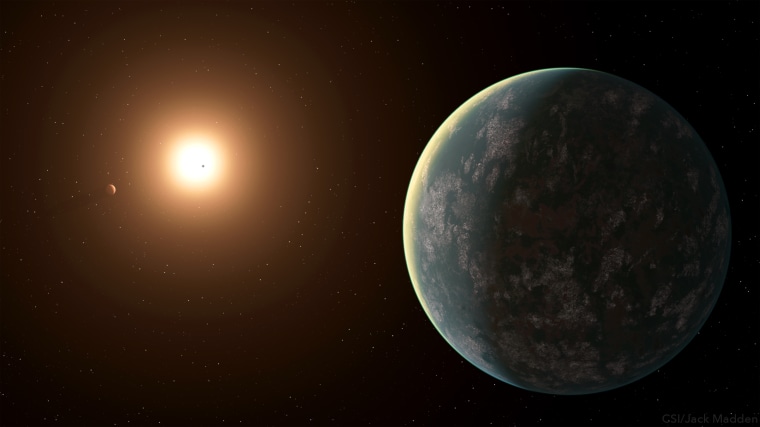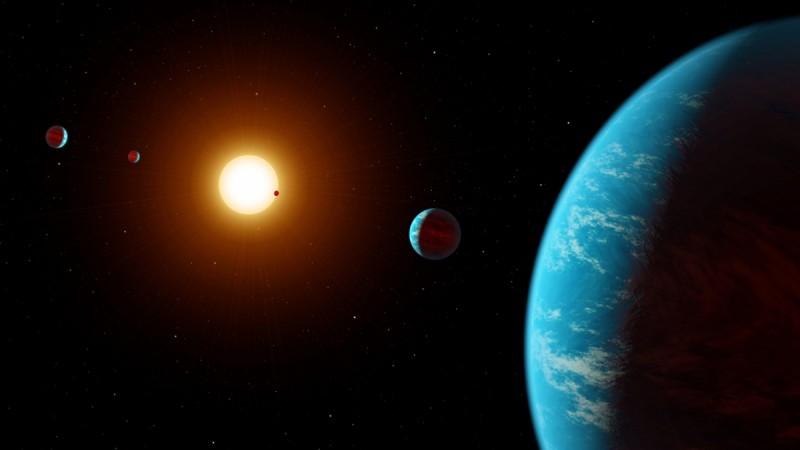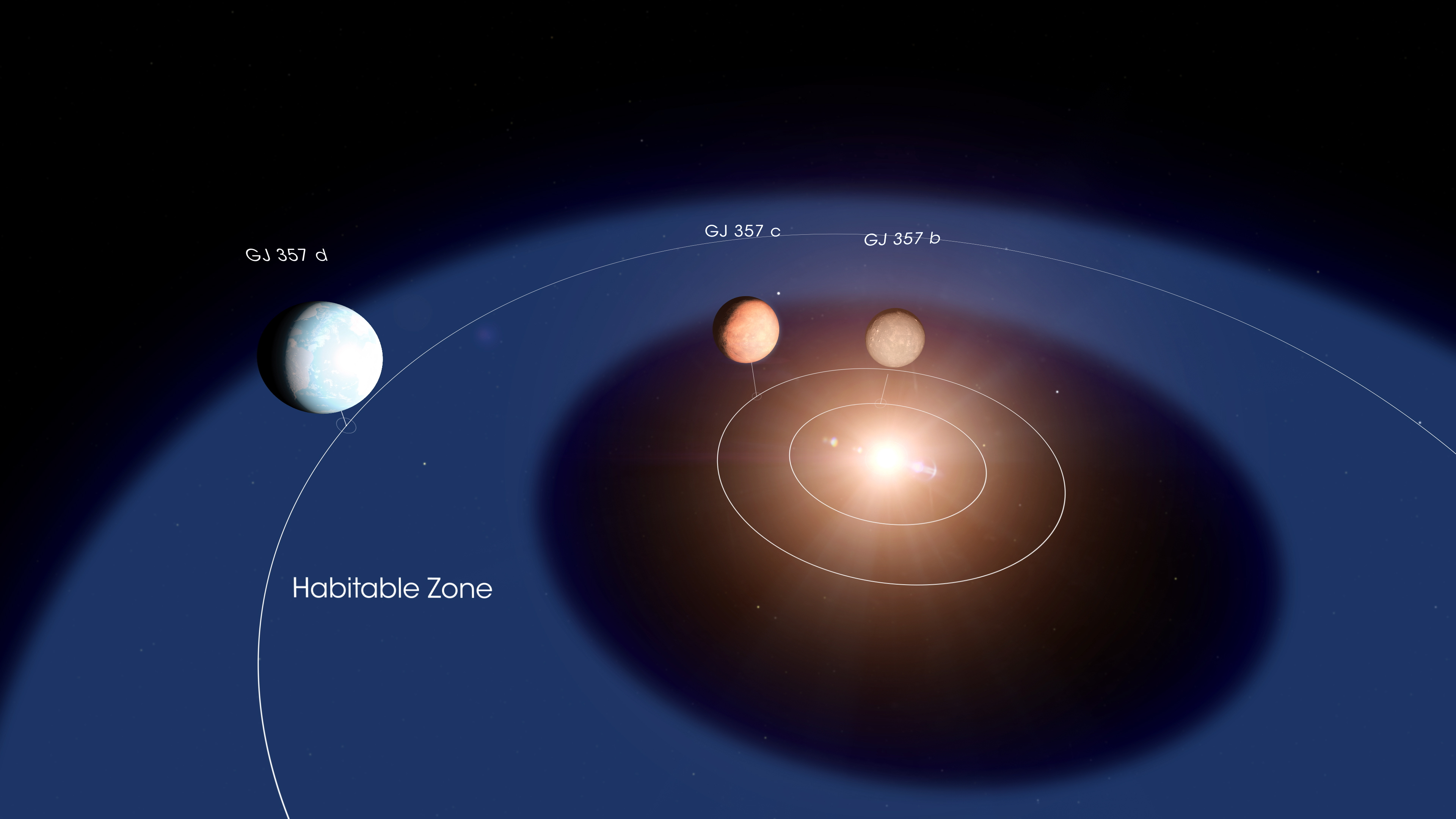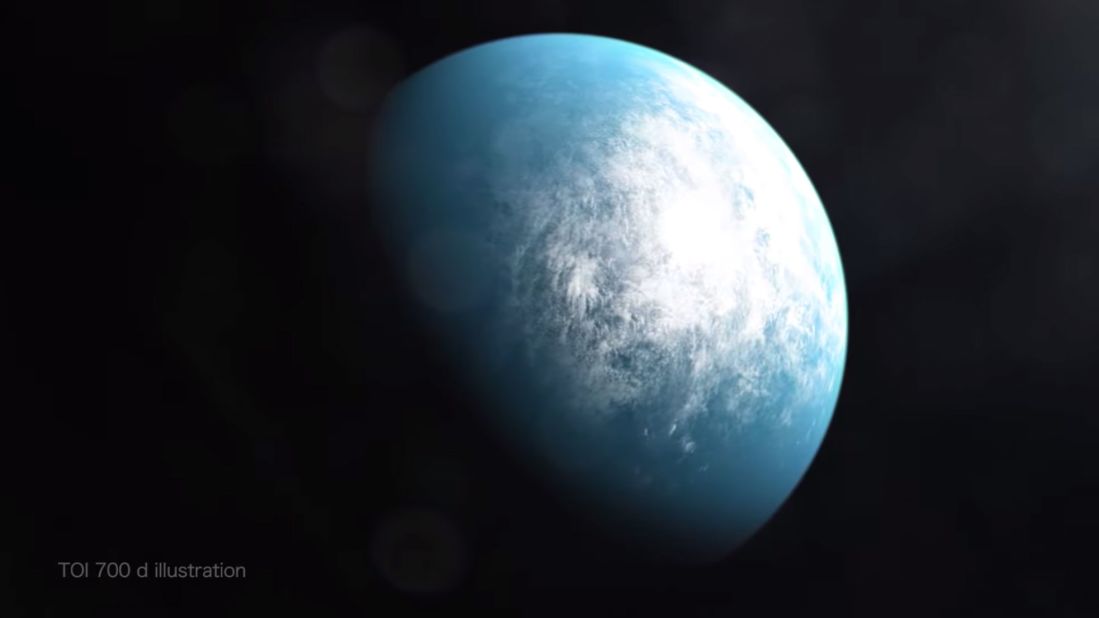
The GJ 357 system has three planets that we know of. One, named GJ 357 d, sits within the star’s habitable zone and could sustain liquid water on its surface.Jack Madden / Carl Sagan Institute; Cornell University
Astronomers announced Wednesday that they had discovered the nearest potentially habitable planet outside our solar system.

The newfound exoplanet — a so-called super-Earth named GJ 357 d — lies 31 light-years away from our solar system. It’s about six times more massive than our planet and orbits in its host star’s habitable zone, where water could exist in liquid form on the surface.
There’s no evidence at this point that life exists on the exoplanet, only that conditions there could support life as we know it.

“It’s a distance from the star that is not too hot and not too cold,” said Lisa Kaltenegger, an associate professor of astronomy and director of the Carl Sagan Institute at Cornell University in Ithaca, New York. The findings, published in the journal Astronomy & Astrophysics, were presented Wednesday at an exoplanet conference in Cambridge, Massachusetts.

Kaltenegger, who co-authored a study about the newfound exoplanet, said the discovery was totally unexpected. “It was like a freebie, because it was discovered in the follow-up,” she said of an analysis of observational data obtained from NASA’s planet-hunting TESS satellite and ground-based telescopes. “I was on vacation at the time, and I was completely surprised.”
Using TESS, a $337-million spacecraft that was launched in April 2018, the astronomers had detected another planet orbiting the same star, known as GJ 357. When they used ground-based telescopes at the Institute of Astrophysics of the Canary Islands and the University of La Laguna to conduct follow-up research on that planet, known as GJ 357 b, the scientists found two more planets in the system, including GJ 357 d.

The other two known planets in the star system, GJ 357 b and GJ 357 c, are not thought to be habitable because surface temperatures on the two worlds would be scorching. The surface of exoplanet GJ 357 c, for instance, is estimated to be about 260 degrees Fahrenheit, according to Kaltenegger.
Little is known about the potentially habitable planet, which takes almost 56 days to orbit its host star at a distance roughly one-fifth of the distance between Earth and the sun. Kaltenegger said a pair of next-generation telescopes — the James Webb Space Telescope that is scheduled to launch in 2021 and the Extremely Large Telescope in Chile that is expected to begin operating in 2025 — should reveal more, including whether the planet is rocky or has oceans.

“This is definitely going to be one of the best targets for these telescopes because it’s so close and so bright,” Kaltenegger said. “This means we can collect that light and analyze it further to see the chemical composition of the atmosphere, or if we see signs of liquid water or oxygen. The closer the better and the brighter the better, and this one happens to be both.”
Elisabeth Adams, an associate research scientist at the Planetary Science Institute in Somerville, Massachusetts, called the discovery of GJ 357 d “really exciting” — especially because the alien world is relatively close by in astronomical terms.